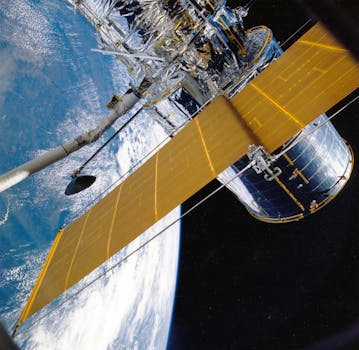
Updates from Above: Essential Insights into the Latest in Satellite Telecommunications
Satellite Telecommunications
Satellite telecommunications have revolutionized the way we communicate and access information. With the latest advancements in technology, satellite telecommunications have become faster, more reliable, and more accessible than ever before. In this article, we will explore the latest updates and insights into the world of satellite telecommunications, and how they are changing the way we live and work.
Satellite telecommunications use a network of satellites orbiting the Earth to transmit and receive data, voice, and video signals. This technology has been used for decades, but recent advancements have made it possible to provide high-speed internet, voice, and video services to even the most remote and underserved areas of the world. Satellite telecommunications have become an essential part of modern life, enabling global communication, navigation, and access to information.
Recent Advancements in Satellite Telecommunications
In recent years, there have been significant advancements in satellite telecommunications technology. One of the most notable advancements is the development of high-throughput satellites (HTS), which provide faster and more efficient data transfer rates. HTS satellites use a combination of advanced technologies, including spot beams and frequency reuse, to provide higher speeds and greater capacity than traditional satellites. This has enabled satellite telecommunications providers to offer faster and more reliable services, including high-speed internet and video streaming.
Another significant advancement in satellite telecommunications is the development of low-Earth orbit (LEO) satellites. LEO satellites orbit the Earth at an altitude of around 1,200 miles, which is much lower than traditional geostationary satellites. This lower altitude enables LEO satellites to provide faster and more efficient data transfer rates, as well as lower latency and higher throughput. LEO satellites are being used to provide a range of services, including high-speed internet, voice, and video services.
Applications of Satellite Telecommunications
Satellite telecommunications have a wide range of applications, including communication, navigation, and access to information. One of the most significant applications of satellite telecommunications is in the provision of high-speed internet services. Satellite internet services are used by people in remote and underserved areas, where traditional internet services are not available. Satellite internet services are also used by people who need to access the internet on the move, such as those in the military, emergency services, and maritime industries.
Satellite telecommunications are also used in navigation, providing location information and timing signals to GPS receivers. This information is used in a wide range of applications, including aviation, maritime, and land transportation. Satellite telecommunications are also used in the provision of voice and video services, including telephony and video conferencing. These services are used by people in remote and underserved areas, as well as by those who need to communicate with people in other parts of the world.
Conclusion
In conclusion, satellite telecommunications have come a long way in recent years, with significant advancements in technology and applications. The development of high-throughput satellites and low-Earth orbit satellites has enabled satellite telecommunications providers to offer faster and more reliable services, including high-speed internet and video streaming. The applications of satellite telecommunications are wide-ranging, including communication, navigation, and access to information. As technology continues to evolve, we can expect to see even more innovative applications of satellite telecommunications in the future.





